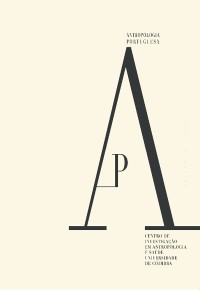Please use this identifier to cite or link to this item:
https://hdl.handle.net/10316.2/47735| Title: | Quilombolas, japoneses e o “macaco” Jupará em roças de quase tudo no Sul da Bahia, Brasil | Other Titles: | Quilombos, Japanese, and the Kinkajou “monkey” in polyculture farms of the south of Bahia, Brazil | Authors: | Guimarães, Eduardo M. | Keywords: | Quilombolas;coccoa;Japanese immigrants;Quilombolas;cacau;migrantes japoneses | Issue Date: | 2019 | Publisher: | Imprensa da Universidade de Coimbra | Abstract: | This article reflects upon the
polyculture systems in the Brazilian
region of the Southern Lowlands of Bahia,
known as “Baixo Sul da Bahia”, considering
its impor tance in the sustainability of
agriculture and, above all, in its connection
with the identity processes. The main
economic activity in the region is the
agriculture developed in small areas called
roças, with a large diversity of crops. The
main aim of the study is to describe this
agricultural model known as “mixed
planting” developed by indigenous people,
enslaved fugitives from large plantations,
and their descendants in the region known
as Empata Viagem (Southern Bahia Lowlands
region, Brazil). Within the framework of
the modernization process of agriculture,
designed to overcome the backwardness
of the countryside, a genuine historical
amnesia makes these agricultural systems
invisible. In agronomic research, Japanese farmers synthesize the new and even the
unusual because, although they arrived in
the region in the mid-20th century, they
stand out as “inventors” of polyculture
systems. The epilogue of this epic story
is the “hands” of the Kinkajou, an animal
supposedly responsible for planting the first
cocoa plantations. Neste artigo, reflete-se sobre os sistemas de policultivo existentes no Baixo Sul da Bahia, tendo em vista a sua importância na sustentabilidade da agricultura e, sobretudo, na sua vinculação com processos identitários. Na região, a principal atividade econômica é a agricultura, desenvolvida em pequenas áreas denominadas roças, onde predominam cultivos extremamente diversificados. O objetivo principal do estudo é descrever este modelo agrícola — conhecido como “plantar misturado” — desenvolvido por indígenas, escravizados fugitivos de grandes plantações e seus descendentes na região denominada Empata Viagem (Baixo Sul da Bahia, Brasil). Nos marcos do processo de modernização da agricultura, concebido para superação do atraso do meio rural, uma verdadeira amnésia histórica torna invisíveis esses sistemas agrícolas. Nas pesquisas agronômicas, agricultores japoneses sintetizam o novo, o inesperado e, mesmo, o inusitado, pois embora tenham chegado à região em meados do século XX se destacam como “inventores” dos sistemas de policultivo. O epílogo da epopeia fica a cargo do Jupará, animal, supostamente, responsável pelo plantio das primeiras roças de cacau do Sul da Bahia. |
URI: | https://hdl.handle.net/10316.2/47735 | ISSN: | 0870-0990 2182-7982 (PDF) |
DOI: | 10.14195/2182-7982_36_9 | Rights: | open access |
| Appears in Collections: | Antropologia Portuguesa |
Files in This Item:
| File | Description | Size | Format | |
|---|---|---|---|---|
| quilombolas__japoneses_e_o_macaco_jupara.pdf | 441.8 kB | Adobe PDF |  |
Items in DSpace are protected by copyright, with all rights reserved, unless otherwise indicated.
